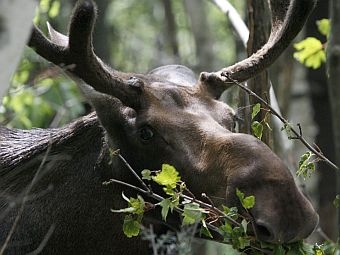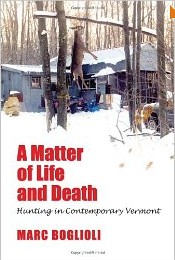by Jim Posewitz
November 2010
Hunting in this creative “New World” democracy we call America is still carving a sustainable niche for itself as our rapidly evolving culture closes the first decade of the 21st Century. A lot has happened since we became a nation in the 18th Century, declared wildlife a public resource in the 19th Century, exploited many species to near extinction in that same century, and then restored almost all the hunted species to a wonderful abundance by the close of the 20th Century.
Introduction of a hunter’s sporting code and the emergence of a conservation ethic late in the 19th Century, advanced by people like George Bird Grinnell, Theodore Roosevelt, and Gifford Pinchot, led to the restoration of a wonderful wildlife abundance. As this was occurring, hunters gained the cultural respect of the people. The respect was earned through the conservation investment of sportsmen; and, through the image they presented as hardy outdoorsmen in fair chase pursuit of wild, elusive, maybe even a few dangerous, game animals. In the process, the animals pursued also acquired a value with the idea of trophy very much a part of the social value of wildlife. In the process, wildlife trophies became symbols representing hunters gaining honor through effort and the animals too were thus valued.
As with any activity in a free-enterprise market driven economy, things of value are coveted, taken as commodities, and peddled for a price. This was true in the 19th Century when the last buffalo seeking sanctuary in Yellowstone Park were poached for profit. It is true today as game farmers and high-fence ranchers domesticate deer, elk, and other species for profit. The peril is that each purchased pseudo-trophy devalues the real thing the community had come to value as totally wild and traditionally earned through personal effort.
The privatizing, commercializing and domesticating of American wildlife is not a new phenomenon. Theodore Roosevelt spoke directly to the subject in Outdoor Pastimes of An American Hunter in 1905 when he wrote: “The professional market hunter who kills game for the hide or for the feathers or for the meat or to sell antlers and other trophies ….and the rich people, who are content to buy what they have not the skill to get by their own exertions – these are the men who are the real enemies of game.” At the time, he was President of the United States.
On the positive side, there are still legions of American hunters in fair chase pursuit of wildlife out on the great American commons – gaining honor through effort and collecting trophies as honorable and rock solid as Mount Rushmore. Their activity and character was described by the last president whose image we chiseled into that national icon. Here is how TR described the hunter and the hunt:
When hunting him (wapiti) …he must be followed on foot, and the man who follows him must be sound in limb and wind.”
“…skill and patience, and the capacity to endure fatigue and exposure, must be shown by the successful hunter.”
“We knew toil and hardship and thirst…but we felt the beat of hardy life in our veins, and ours was the glory of work and the joy of living.”
“If they would only keep to rowboats or canoes, and use oar or paddle themselves, they would get infinitely more benefit than by having their work done for them by gasoline.”
“I wish to preach, not the doctrine of ignoble ease, but the doctrine of the strenuous life, the life of toil and effort, of labor and strife; to preach the highest form of success which comes, not to the man who desires mere easy peace, but to the man who does not shrink from danger, from hardship, or from bitter toil, who out of these wins the splendid ultimate triumph.”
Writing in his biography Gifford Pinchot, the father of American forestry, had cause to describe the character of TR. While scores of biographers have written volumes trying to capture the essence of TR, it took Pinchot only nine words to describe what the man was all about. Pinchot wrote: “He was an outdoor man – more a wilderness hunter.” TR’s observations on gaining honor through effort are as valuable today as they were the day he penned them. The value our society places on wildlife trophies was built on the reality of what it takes to earn success afield – not really on the dimensions of the animal thus taken. Each commercially manufactured pseudo-trophy or catered easy kill only contributes to the inevitable erosion and ultimate loss of those values.













